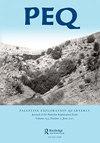On the Origins of the Tel Nami Pyxides
IF 0.8
2区 历史学
0 ARCHAEOLOGY
引用次数: 0
Abstract
ABSTRACT The Nami project included several sub-sites, among them the Late Bronze Age (LB) IIb–c necropolis in Nami East. The cemetery is situated c 50 m east of the main tell. Nami was a focal point of trade linking a north–south maritime trade route with an east–west terrestrial one. The settlement was dated by excavations to the Middle Bronze Age IIa and the LB IIb–c, the last of the 13th and early 12th centuries bce. Among the numerous finds in the LB IIc Nami necropolis, were a number of the ceramic shape named alabastron, or pyxis. They are not homogenous in shape, size, ware and decoration. Neutron Activation Analysis and Petrographic analyses of the ware established that they also do not share provenance. While the earliest appearance of the shape was in the Aegean, eventually a small version of the pyxis became more common in the southern Levant’s necropoleis, and is found at Nami, where it was placed near the crania in burials. The analyses carried out on samples from the cemetery of Nami, showed that some of the pyxides were produced in the vicinity of the site, or in the general area. Others, however, were imported from Transjordan. Those include examples of plain and decorated ones.Tel Nami Pyxides的起源
本文章由计算机程序翻译,如有差异,请以英文原文为准。
求助全文
约1分钟内获得全文
求助全文

 求助内容:
求助内容: 应助结果提醒方式:
应助结果提醒方式:


